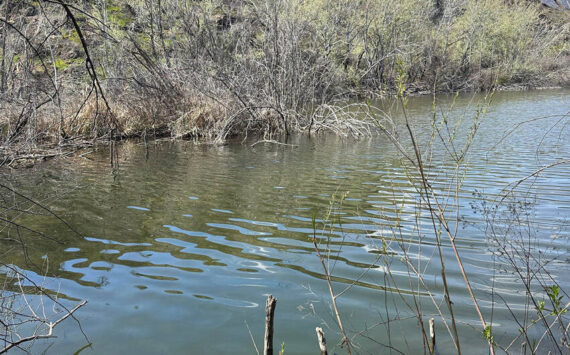BLAINE, Wash. – U.S. Customs and Border Protection (CBP) Office of Field Operations is advising travelers that although multiple wildfires are present across the U.S./Canadian border in Washington, they are not threatening the ports of entry (POE). All Washington POEs, specifically Oroville, Nighthawk, Laurier, Danville and Ferry Ports remain open during their normal operating hours.
Traffic patterns have been modified however; U.S. Highway 395 is currently closed. All non-local traffic for the Laurier Port of Entry is being re-routed to the Danville or Frontier Ports of Entry due to this highway closure. A partially marked detour is available on Highway 395. The route is not suitable for commercial traffic as it detours through back/dirt roads.
Ross Lake has been evacuated due to wildfires. Depending on the location of the individuals, some may be evacuated via Hozomeen through Canada and then back into the United States through a U.S. port of entry. CBP is aware some of the evacuated individuals may not have proper documentation due to the evacuation route; however, CBP does not and will not refuse re-admittance of U.S. Citizens back into the United States, even without documentation/passport. The ports will facilitate their entry back into the United States.
Okanogan Complex now encompasses the following fires: 9-Mile, Blue Lake/Lime Belt (65,112 acres-28% contained), Beaver Lake (12,617 acres), Twisp River Road (8,402 acres) and Tunk Block (45,975 acres-30% contained). The Knobby fire merged with the Lime Belt fire. The Rocky Mountain Type 1 Incident Management Team has assumed command of the Okanogan Complex. Numerous mandatory road closures and voluntary advisory evacuations are in place throughout Okanogan County.
- Nine Mile Fire: This fire is 90 percent contained at 4,720 acres and remains in patrol status.
- Lime Belt/Blue Lake Fire: This fire made a major run two days ago, gaining almost 20,000 acres to the south and west. Fire managers anticipate very high head rates of spread in the lighter fuels, with the fire backing and flanking actively into the wind and on protected slopes. Crown fires with long range spotting is expected where the fire gets into heavier timber.
- Beaver Lake Fire: This fire grew to 14,760 acres two days ago. Fire managers anticipate very high rates of fire spread in the lighter fuels. Where the fire gets into heavier timber, expect crown fire runs with long range spotting.
- Twisp River Fire: Two nights ago the fire grew overnight to 8,402 acres. Structural firefighters provided active protection of homes and structures along the Twisp River Road with the fire continuing to move down the valley. The portion of the fire that faces the Methow Valley will be exposed to strong northwest winds. The west flank of the fire is expected to spread with single and group tree torching. In the Twisp River drainage, winds will vary in speed and direction, resulting in the potential for flare ups and spotting.
- Tunk Block Fire: This fire grew more than 36,000 acres and has now burned onto the Colville Reservation. Fire managers are anticipating very high rates of spread at the fire’s head, potentially resulting in the Tunk Block Fire to join the North Star Fire to the east. Tunk Block is burning in grass and timber about four miles northeast of Riverside.
- Stickpin Fire: This fire in Colville National Forest is at 35,530 acres, as of yesterday. Structure protection is the highest priority for the limited resources; firefighters are providing structure protection and looking for options to construct fire lines.
- Renner Fire: This fire in Colville National Forest is located west of the community of Barstow. It is continuing to expand; the size is now 974 acres, as of yesterday.
The fires are dramatically affecting the communities of Winthrop, Omak Flats, Riverside, Tonasket, Buzzard Lake, Nevel Ride, Loup Loup Meadows and Okanogan. Structural firefighting resources from diverse locations in Washington and nearby states have been brought in to provide structure protection to properties at greatest risk of threat. The fire is triggering the advisory evacuation of people, pets and livestock to Red Cross shelters at the Brewster and Tonasket High Schools with animals being sheltered at the Okanogan County Fairgrounds. The National Guard continues to arrive, as are firefighters from Australia and New Zealand.
Updates for road closures can be located at the WSDOT website: http://www.wsdot.com/traffic/trafficalerts/?_ga=1.255980811.1473586095.1436287144.
Wildfire updates can be located at the Northwest Interagency Coordination Center: http://gacc.nifc.gov/nwcc/
See related story: Update: Oliver, B.C. area fire






